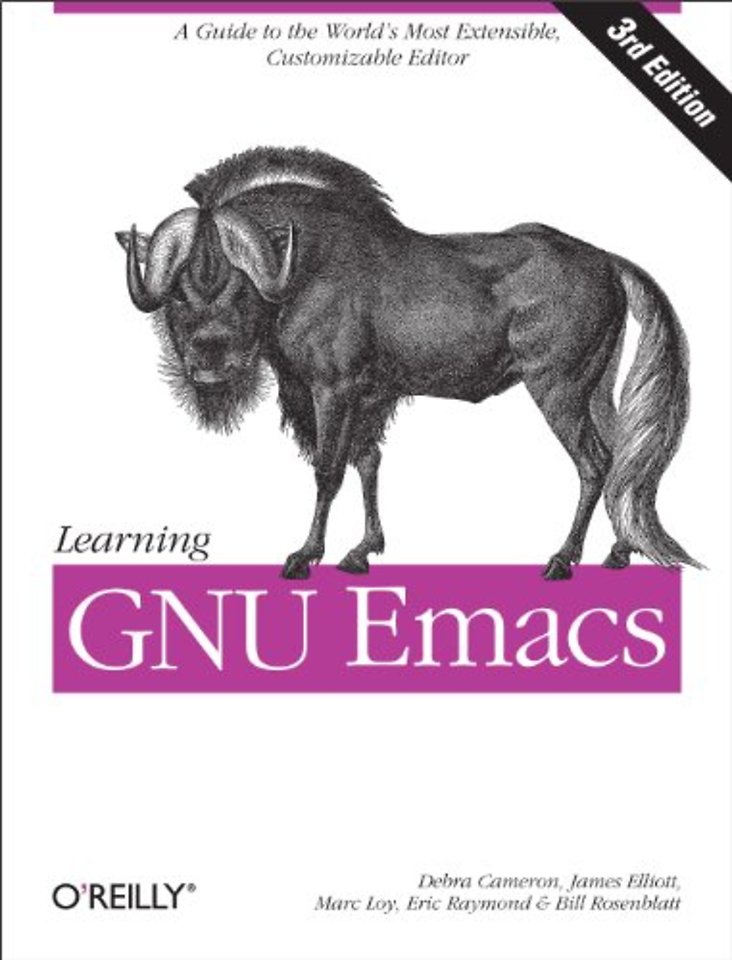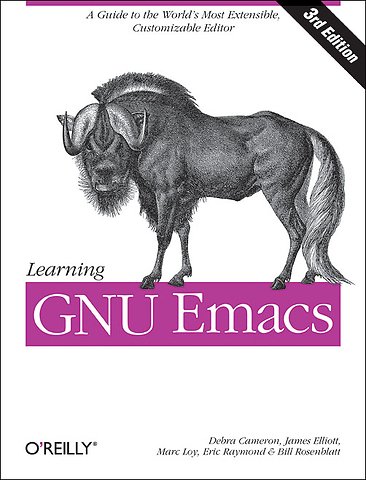Learning GNU Emacs 3rd Edition
A Guide to the World's Most Extensible Customizable Editor
Samenvatting
GNU Emacs is the most popular and widespread of the Emacs family of editors. It is also the most powerful and flexible. Unlike all other text editors, GNU Emacs is a complete working environment-you can stay within Emacs all day without leaving. 'Learning GNU Emacs, 3rd Edition' tells readers how to get started with the GNU Emacs editor. It is a thorough guide that will also 'grow' with you: as you become more proficient, this book will help you learn how to use Emacs more effectively. It takes you from basic Emacs usage (simple text editing) to moderately complicated customization and programming.
The third edition of 'Learning GNU Emacs' describes Emacs 21.3 from the ground up, including new user interface features such as an icon-based toolbar and an interactive interface to Emacs customization. A new chapter details how to install and run Emacs on Mac OS X, Windows, and Linux, including tips for using Emacs effectively on those platforms.
'Learning GNU Emacs, 3rd edition', covers:
- How to edit files with Emacs
- Using the operating system shell through Emacs
- How to use multiple buffers, windows, and frames
- Customizing Emacs interactively and through startup files
- Writing macros to circumvent repetitious tasks
- Emacs as a programming environment for Java, C++, and Perl, among others
- Using Emacs as an integrated development environment (IDE)
- Integrating Emacs with CVS, Subversion and other change control systems for projects with multiple developers
- Writing HTML, XHTML, and XML with Emacs
- The basics of Emacs Lisp
The book is aimed at new Emacs users, whether or not they are programmers. Also useful for readers switching from other Emacs implementations to GNU Emacs.
Specificaties
Inhoudsopgave
1. Emacs Basics
Introducing Emacs!
Understanding Files and Buffers
A Word About Modes
Starting Emacs
About the Emacs Display
Emacs Commands
Opening a File
Saving Files
Leaving Emacs
Getting Help
Summary
2. Editing
Moving the Cursor
Deleting Text
Marking Text to Delete, Move, or Copy
Emacs and the Clipboard
Editing Tricks and Shortcuts
Canceling Commands and Undoing Changes
Making Emacs Work the Way You Want
3. Search and Replace
Different Kinds of Searches
Search and Replace
Checking Spelling Using Ispell
Word Abbreviations
4. Using Buffers, Windows, and Frames
Understanding Buffers, Windows, and Frames
Working with Multiple Buffers
Working with Windows
Working with Frames
More About Buffers
More About Windows
Holding Your Place with Bookmarks
5. Emacs as a Work Environment
Executing Commands in Shell Buffers
Using Dired, the Directory Editor
Printing from Emacs
Reading Manpages in Emacs
Using Time Management Tools
6. Writing Macros
Defining a Macro
Tips for Creating Good Macros
A More Complicated Macro Example
Editing a Macro
The Macro Ring
Binding Your Macro to a Key
Naming, Saving, and Executing Your Macros
Building More Complicated Macros
Executing Macros on a Region
Beyond Macros
7. Simple Text Formatting and Specialized Editing
Using Tabs
Indenting Text
Centering Text
Using Outline Mode
Rectangle Editing
Making Simple Drawings
8. Markup Language Support
Comments
Font-Lock Mode
Writing HTML
Writing XML
Marking up Text for TEX and LATEX
9. Computer Language Support
Emacs as an IDE
Writing Code
C and C++ Support
Java Support
The Java Development Environment for Emacs (JDEE)
Perl Support
SQL Support
The Lisp Modes
10. Customizing Emacs
Using Custom
Modifying the .emacs File Directly
Modifying Fonts and Colors
Customizing Your Key Bindings
Setting Emacs Variables
Finding Emacs Lisp Packages
Starting Modes via Auto-Mode Customization
Making Emacs Work the Way You Think It Should
11. Emacs Lisp Programming
Introduction to Lisp
Lisp Primitive Functions
Useful Built-in Emacs Functions
Building an Automatic Template System
Programming a Major Mode
Customizing Existing Modes
Building Your Own Lisp Library
12. Version Control
The Uses of Version Control
Version Control Concepts
How VC Helps with Basic Operations
Editing Comment Buffers
VC Command Summary
VC Mode Indicators
Which Version Control System?
Individual VC Commands
Customizing VC
Extending VC
What VC Is Not
Using VC Effectively
Comparing with Ediff
13. Platform-Specific Considerations
Emacs and Unix
Emacs and Mac OS X
Emacs and Windows
14. The Help System
Using the Tutorial
Help Commands
Help with Complex Emacs Commands
Navigating Emacs Documentation
Completion
A. Emacs Variables
B. Emacs Lisp Packages
C. Bugs and Bug Fixes
D. Online Resources
E. Quick Reference
Glossary
Index







